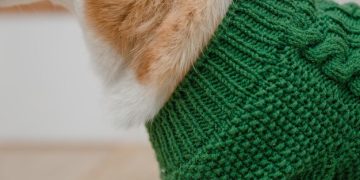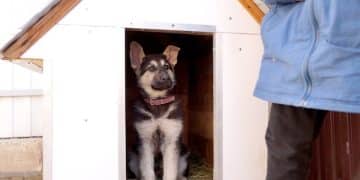Winter Pet Safety: Tips to Protect Your Furry Friend
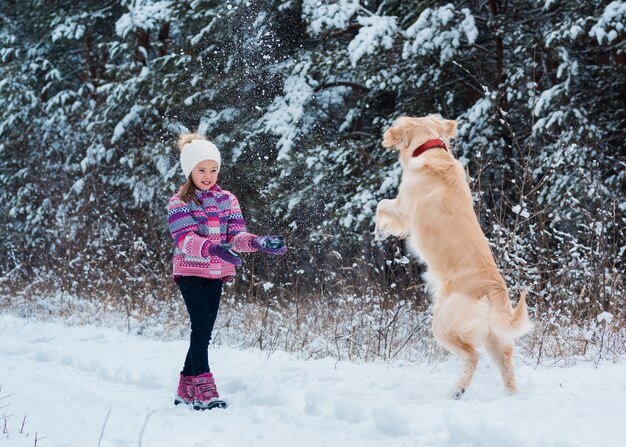
Anúncios
Winter pet safety is crucial for keeping furry friends healthy and comfortable; this guide covers key areas like recognizing cold weather risks, providing proper shelter, and maintaining a safe environment.
As winter’s icy grip tightens, ensuring the winter pet safety of our beloved companions becomes paramount. From frostbite risks to the dangers of antifreeze, the season presents unique challenges. Understanding these hazards and taking proactive measures is essential to protect furry friends from cold weather hazards.
Anúncios
Recognizing Cold Weather Risks for Pets
Winter brings unique hazards that can significantly impact pet health. Recognizing these risks is the first step in ensuring their safety. Just like humans, pets are susceptible to cold-related illnesses and injuries.
Hypothermia in Pets
Hypothermia occurs when a pet’s body temperature drops dangerously low. Symptoms include shivering, lethargy, and in severe cases, muscle stiffness. Small breeds, senior pets, and those with short coats are particularly vulnerable.
Anúncios
Frostbite Concerns
Frostbite affects extremities such as ears, paws, and tails. The tissues freeze, leading to potential damage. Early signs include pale or bluish skin, which can turn black and slough off later.
- Limit outdoor exposure during extreme cold.
- Use pet-friendly warming balms on paws before going outside.
- Dry pets thoroughly after they’ve been out in the snow or rain.
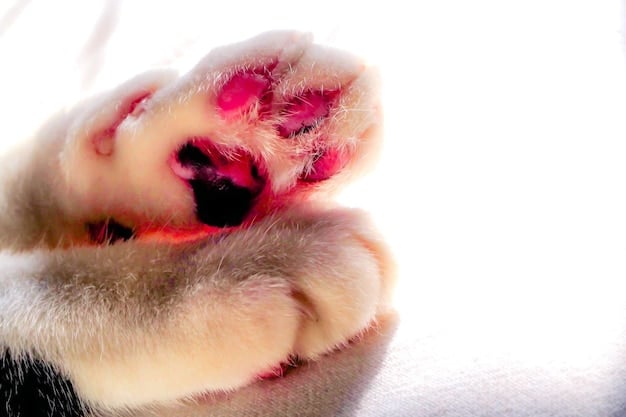
Providing Adequate Shelter and Warmth
Shelter is a vital component of winter pet safety. Ensuring pets have access to a warm, dry place can significantly reduce the risk of cold-related illnesses.
Indoor Comfort
For indoor pets, maintain a comfortable temperature inside the house. Ensure their bedding is warm and located away from drafts. Elevated beds can help keep them off cold floors.
Outdoor Shelters
If pets spend time outdoors, provide a well-insulated shelter. The shelter should be appropriately sized, with a raised floor and a windproof entrance.
- Insulate outdoor shelters with straw or blankets.
- Check water bowls frequently to prevent freezing.
- Consider heated pet beds for added warmth.
Adequate shelter protects pets from harsh weather conditions, helping them maintain a healthy body temperature and overall well-being.
Maintaining a Winter-Appropriate Diet and Hydration
Proper hydration and nutrition are essential for winter pet safety. Cold weather can affect a pet’s metabolism and water intake, necessitating adjustments to their diet and ensuring access to fresh water.
Adjusting Food Portions
Pets may require more calories during winter to maintain body heat. Consult with a veterinarian to adjust food portions based on activity level and breed.
Ensuring Hydration
Water is just as crucial in winter as in summer. Frozen water bowls are a common issue for outdoor pets, so check them regularly and replace them with fresh water.
- Add wet food to the diet to increase hydration.
- Use heated water bowls to prevent freezing.
- Monitor water intake to ensure adequate hydration.
Sufficient hydration and balanced nutrition are key to supporting your pet’s health during the winter months.
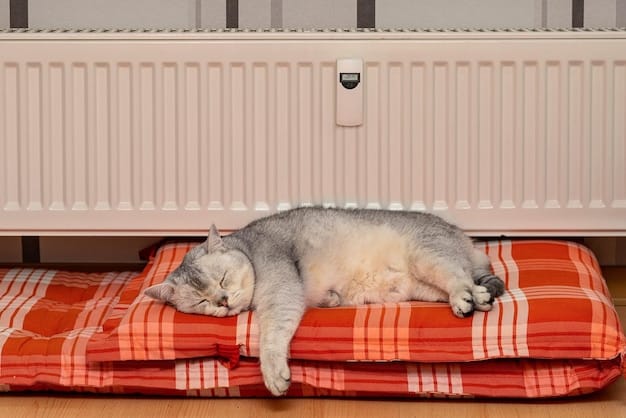
Protecting Paws from Winter Hazards
Paws bear the brunt of winter’s impact, making paw protection an essential aspect of winter pet safety. Cold temperatures, ice, salt, and chemicals can cause significant damage.
Booties and Paw Wax
Protective booties can shield paws from the elements, while paw wax creates a barrier against irritants and helps prevent cracking. Regular application can make a big difference.
Post-Walk Cleaning
After walks, clean your pet’s paws thoroughly to remove any salt or chemicals. Use warm (not hot) water and a soft towel.
- Inspect paws regularly for cuts, cracks, or signs of irritation.
- Keep nails trimmed to prevent ice and snow buildup.
- Use pet-safe de-icing agents on walkways.
Protecting paws minimizes the risk of injury and discomfort, contributing to overall winter well-being.
Avoiding Winter Toxins and Chemicals
Winter brings increased exposure to toxins and chemicals that can be dangerous for pets, making awareness of these risks a key element of winter pet safety.
Antifreeze and Other Dangers
Antifreeze is highly toxic but has a sweet taste that can attract pets. Keep it stored securely and clean up any spills immediately. Other hazards include de-icing salts and certain types of ice melt.
Avoiding Exposure
Be vigilant about what your pet might ingest while outdoors. Keep them away from areas where chemicals are used, and always supervise them closely.
- Use pet-friendly ice melt products.
- Clean up spills of antifreeze and other chemicals immediately.
- Monitor pets for signs of poisoning, such as vomiting or lethargy.
Being aware of these toxins and taking steps to avoid exposure helps ensure a safe winter for your furry friends.
Winter Grooming Tips for Pets
Proper grooming is essential for winter pet safety. Maintaining a healthy coat helps regulate body temperature and prevents matting that can trap moisture and cold.
Regular Brushing
Brush your pet regularly to remove loose fur and prevent mats. Matted fur reduces insulation and can lead to skin irritation.
Bathing Considerations
Avoid over-bathing during winter, as it strips the coat of natural oils. When bathing is necessary, dry your pet thoroughly afterward.
- Trim long-haired breeds around their paws to prevent snow buildup.
- Use a moisturizing shampoo to prevent dry skin.
- Consult a professional groomer if you’re unsure about winter grooming practices.
Proper grooming supports healthy skin and a well-insulated coat, crucial for winter comfort and safety.
| Key Point | Brief Description |
|---|---|
| 🌡️ Hypothermia | Prevent low body temperature by limiting exposure and providing warm shelter. |
| 🐾 Paw Protection | Use booties or wax to shield paws from salt and cold; clean paws after walks. |
| ❄️ Hydration | Ensure fresh, unfrozen water is always available; consider adding wet food to their diet. |
| 🧪 Toxin Awareness | Avoid antifreeze and pet-unsafe de-icers; clean chemical spills immediately. |
FAQ Section
▼
Generally, temperatures below 32°F (0°C) are potentially hazardous for pets. Small breeds, senior pets, and those with thin coats are at higher risk, and should have limited exposure.
▼
Signs include shivering, lethargy, weakness, and in severe cases, muscle stiffness and a decreased heart rate. If you observe these symptoms, seek veterinary care immediately for your pet.
▼
Use booties or apply paw wax before going outside to create a barrier. After walks, clean your pet’s paws with warm water to remove any salt or chemicals that may have accumulated.
▼
No, but many de-icing salts contain chemicals that can irritate paws or be toxic if ingested. Opt for pet-friendly de-icing agents made with ingredients like urea or magnesium chloride.
▼
Antifreeze is extremely toxic. If you suspect your pet has ingested antifreeze, seek immediate veterinary care. Even a small amount can be fatal, so quick intervention is essential.
Conclusion
Ensuring your pet’s winter safety requires awareness, preparation, and proactive care. By understanding the risks, providing adequate shelter, and maintaining a healthy routine, you can help your furry friend stay safe, warm, and happy throughout the cold season.

